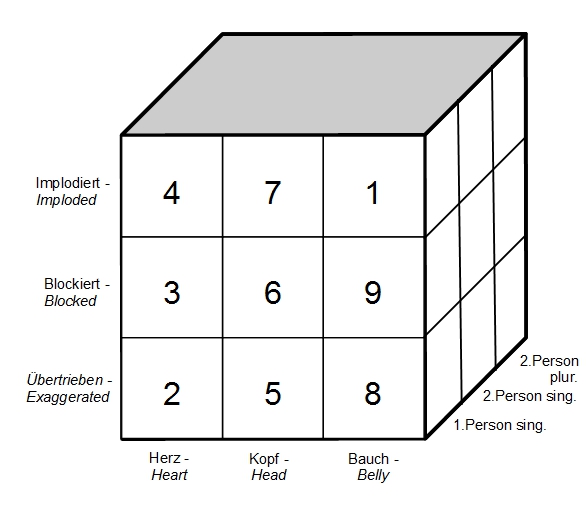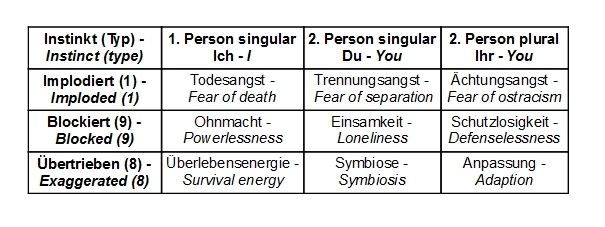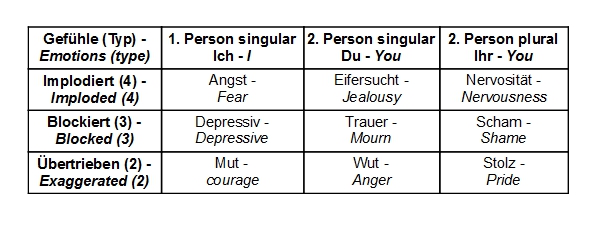Protecting
Mechanisms
To bypass the above-mentioned birth traumatization 3-dimensional protecting mechanisms are formed in humans. These are reaction patterns (exaggerated, blocked, imploded), protection layers (instinct layer, emotional layer, thinking layer) and relationship perspectives (1st person singular - I, 2nd person singular - You, 2nd person plural - You). This therefore forms 3x3x3 = 27 possibilities which relate exactly to the types of the Enneagram (9 types x 3 basic instincts).

These reaction pattern can be applied for each protection layer. The instincts are the deepest and oldest protective layer around the traumatic experience. Especially the belly types 8, 9, 1 in enneagram and thus the prozess of expulsion at birth are here closely associated.
The emotional protection layer is superimposed as a second layer. By triggering emotions it is prevented to become contact with instinctive reactions and in particular with the traumatic experience. This corresponds to the heart types 2, 3, 4 in the enneagram and thus the symbiotic experience of the embryo to the placenta.
The third and youngest protection layer are formed by the thoughts and ideas. This lead to a life that bypasses just traumatic situations and contexts, prevent the risk of unpleasant emotions or instincts. Especially the head types 5, 6, 7 of the enneagram are particularly affected and in accordance the head protection during the birth process.
From the transpersonal psychology by A. H. Almaas [16]/p.S.205-213 we know the basic instincts of humans, which relate to following relationship perspectives:
The perspective of the 1st person singular only looks at itself and thus includes aspects such as fear of death and the self-preservation, which ensures survival.
The viewpoint of 2nd person singular focuses the opposite and thus includes topics such as loneliness, separation anxiety and also the sexual instinct, which thus ensures the art reproduction.
By view of the 2nd person plural a perspective in relation to a group is chosen and this applies, the theme vulnerability as well as the social instinct, which secures the art conservation by group membership.
On the spiritual path toward consciousness is initially only slowly realized, that reaction pattern (exaggerated, blocked, imploded) and protection layers (instincts, emotions and thoughts) but also perceptions of relationship (1st person singular - I, 2nd person singular - You, 2nd person plural - You) are active for covering traumatic (birth) experiences. The following tables shows these effects for each protective layer in detail:



After a directly following chapter on the basic understanding of life, useful methods are described in other chapters, which support the spiritual path, the awareness and even push forward.